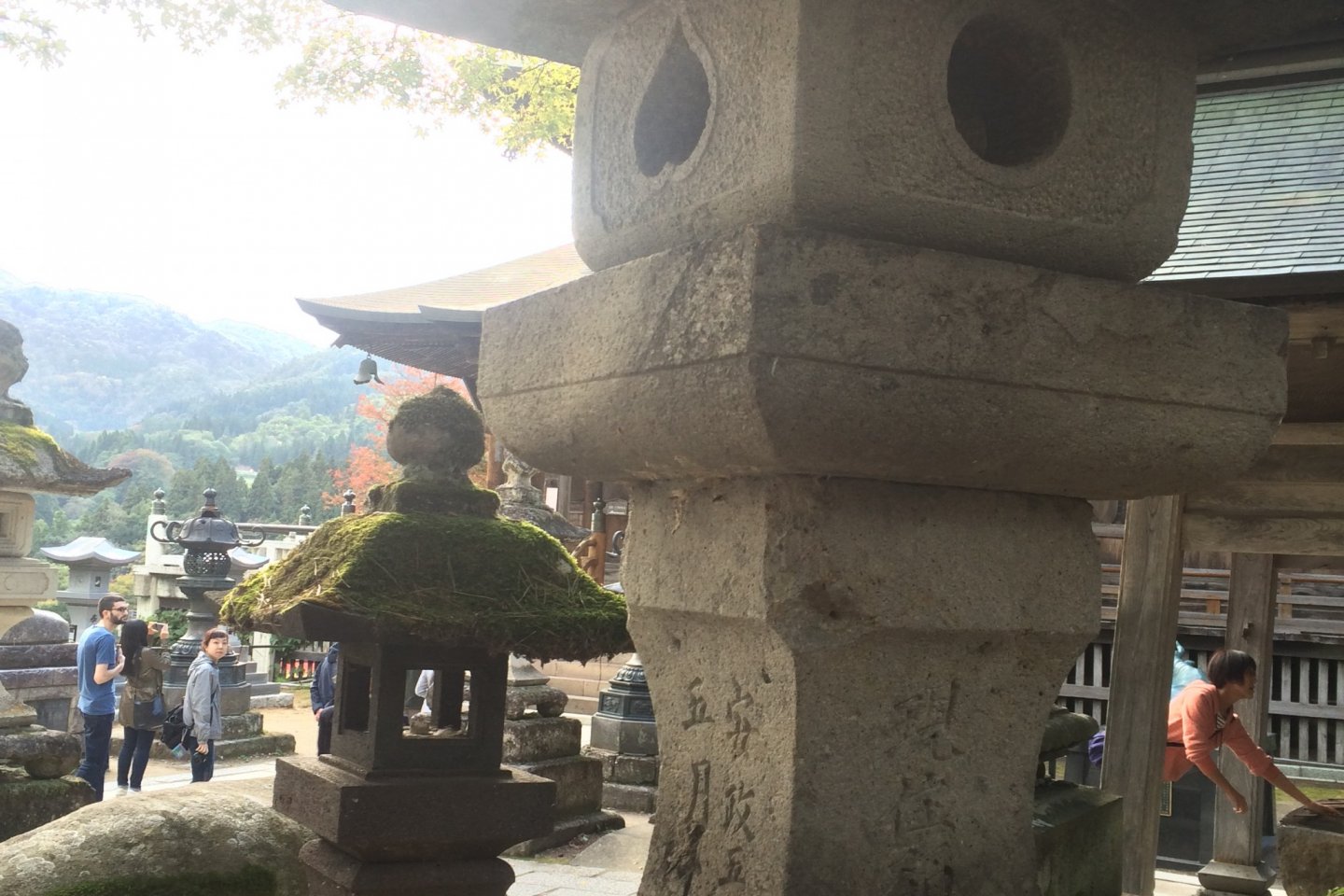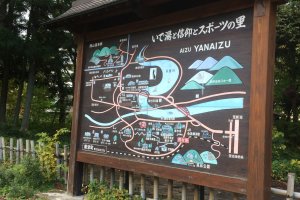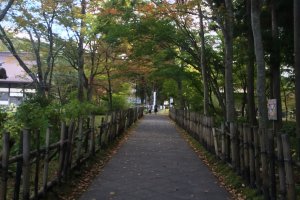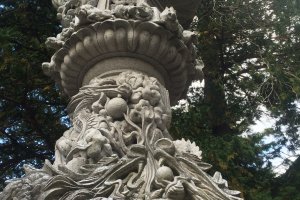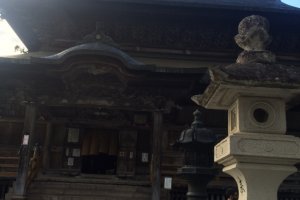Located a short distance away from the Samurai City of Aizuwakamatsu, Yanaizu is a small town boasting the birthplace of a Fukushima Prefecture legend - the Akabeko. Yanaizu also hosts various events throughout the year, including the Yanaizu Naked Man Festival in January where local men dressed in loincloths wrestle each other in order to be the first to climb up a rope into the rafters to ring a gong.
On my trip to Yanaizu, I stopped by Enzoji temple, where the Akabeko legend was born and the Yanaizu Naked Man Festival takes place. It was situated on top of a hill, offering a stunning view of the area, especially the river. The path leading from the parking lot to the temple is surrounded by trees and traditional temples and interesting sculptures.
There are two entrances to the temple, one from the parking lot and one that descends down a stone staircase to the street near the river. This entrance is protected by two statues and a gate. In front of the main temple is a statue of a cow. The brass is worn away in places where hopeful visitors rub the part of the body they want healed, according to the legend.
Akabeko, literally translated as "red cow," is a legend dating back to the 9th century. A herd of red cows helped with the construction of the temple, and a statue was constructed in its honor. There are slight variations to the legend, but the cow is well known as a symbol of patience, strength and good fortune.
While the cow originated from Yanaizu, it has become an unofficial mascot for Fukushima Prefecture, and you can see caricatures of the adorable red cow across the prefecture. The most famous representation of this cow that you can buy from shops all over Fukushima Prefecture is a bobblehead figure, created by only a handful of family-run shops. If you visit the area, this is one of the most recommended gifts to bring back home.
If you take a walk down the stone steps of the temple and up the street near the river, you will stumble upon a few shops selling awa-manju. Manju is a pastry filled with bean paste. This region is known for a special type of manju, where the outer layer is made out of a different texture, similar to cornmeal. If you have the chance, I recommend stopping by for a freshly made awa-manju, or grab a box to share with your friends and family back home.
